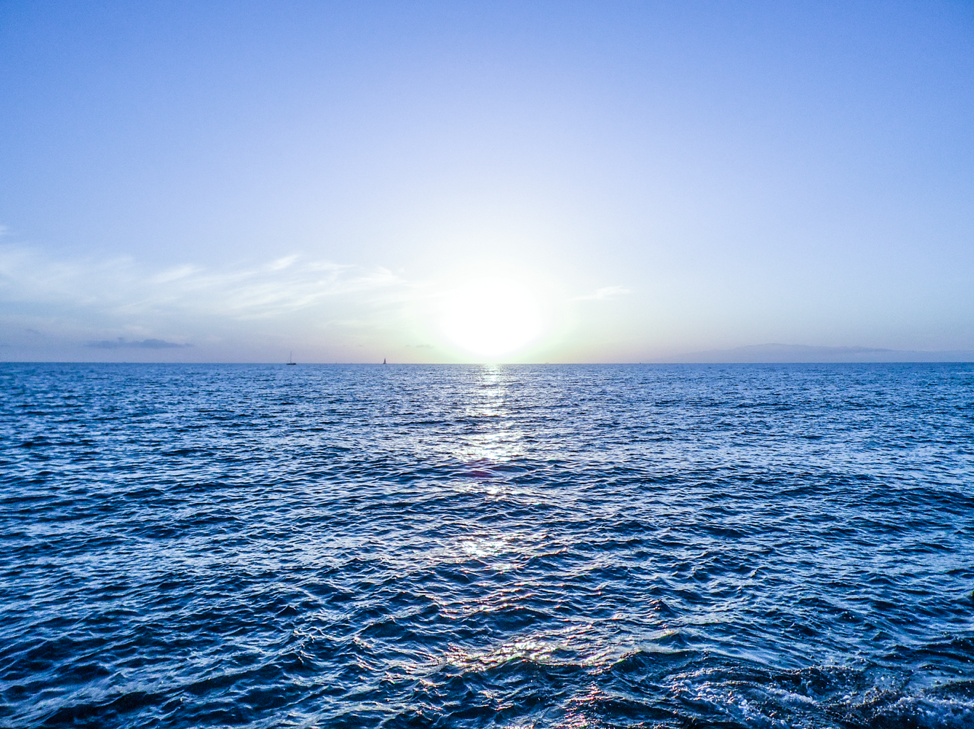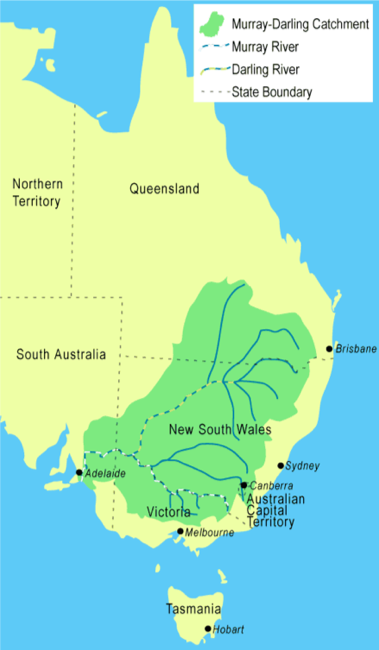Water, water everywhere, / Nor any drop to drink
Figure 1 Photo by Peter Brown from Pexels.
By A. Mohamed Mansoor
The frog does not drink up the pond in which he lives. —Native American Proverb
Today we face a global water crisis. Right now an estimated 1.2 billion people live in areas with chronic water scarcity, and upwards of 4 billion — two-thirds of the world’s population — experience shortages at least one month a year. While water covers 71% of the world’s surface, 97% lies in the ocean and just 2.5% is freshwater.
According to the United Nations, water use has grown at more than twice the rate of population increase in the last century. By 2025, an estimated 1.8 billion people will live in areas plagued by water scarcity, with two-thirds of the world's population living in water-stressed regions as a result of use, growth, and climate change.
Much of that use lies with manufacturing as well as agriculture, but what we choose to buy can have a big impact on water usage. It takes 37 gallons (140 liters) of water to make a single cup of coffee. According to author Stephen Leahy's "Your Water Footprint: The Shocking Facts About How Much Water We Use to Make Everyday Products," it takes 2,000 gallons (7,600 liters) of water to make your favorite pair of jeans. That includes growing the cotton and manufacturing the garment, but it doesn't include the water that you'll use to wash your jeans over time. Avocados, almonds – even bottles of water themselves, are all highly water-intensive enterprises. Agriculture uses about 70% of freshwater across the globe.
The key drivers of today’s global water crisis include:
Figure 2 Dry lake bed, Unsplash.
Climate Change has increased flood risk to already wet places, while making hot places even hotter.
More people = more water. The world's population, now at 7.5 billion, is projected to add 2.3 billion more people by 2050.
Depleting aquifers. A recent NASA study concluded that 21 of the largest 37 aquifers in the world have exceeded sustainability tipping points and are being depleted.
Crumbling water infrastructure. In the United States, 6 billion gallons of treated water are lost per day from leaky pipes alone.
Natural infrastructure destroyed. Healthy ecosystems are " natural infrastructure" and vital to clean, plentiful water. They filter pollutants, buffer against floods and storms, and regulate water supply. Plants and trees are essential for replenishing groundwater; without them, rainfall will slide across dry land, instead of seeping into the soil. Loss of vegetation from deforestation, overgrazing and urbanization is limiting our natural infrastructure and the benefits that it provides. Forested watersheds around the world are under threat: watersheds have lost up to 22 percent of their forests in the past 14 years.
Wasted water. From inefficient practices to pollution, we treat water as if it’s limitless. About 80 percent of the world's wastewater is discharged back into nature without further treatment or reuse.
Water incorrectly valued. When the price of receiving clean water is closer to its actual service cost, efficient water use will be incentivized.
The most promising solutions seem to focus on:
Changing mindsets around water usage
Holistic governance structures
National and municipal improvements to reduce water loss
Technological innovation
Figure 3 Poster issued in 2017 by Western Cape government calling for people to conserve water. Credit: Wikipedia.
Reducing Use Case Study
In January 2018, officials in Cape Town announced that the city of 4 million people was three months away from running out of municipal water, the end result of three consecutive years of insufficient rainfall. A barrage of efforts allowed Cape Town to postpone “Zero Day”.
The government first reduced allocations for farming, so usage went from 30% to 15% of the Western Cape water supply. Then a tariff increase rolled out in February 2018 to ensure that high users paid much more. Each person could only use 50 liters of water per day, meaning gardens went dry, 2 minute showers became the norm and cars went unwashed. To put 50 liters of water in perspective, the average daily per capita water use in California was 321 liters (in 2016). Then former Mayor Patricia de Lille visited the homes of the highest water wasters, as well as publishing a list of those who flouted water restrictions. Continued offenders risked having their water shut off completely.
Capetonians showed ingenuity in saving water including catching and reusing shower water, recycling washing machine water, and daily loo flushes as well as nighttime irrigation. Further discussions are afoot to consider clearing non-native species like pine, eucalyptus and wattle which deplete dam reserves.
For now, the city and its residents are still enduring moderate drought conditions but the specter of Day Zero has receded. As other urban centers around the world start to face their own water shortages, the lessons learned and put into practice in Cape Town could serve as a blue print for how to significantly reduce our water consumption.
Figure 4 Map of the Murray-Darling Basin. Credit: Wikipedia.
Better Governance Case Study
The Murray–Darling Basin (MDB) is located in Southeast Australia and covers an area of over one million km2. The MDB suffers from highly variable rainfall and, sometimes, severe droughts.
At the heart of Australia’s MDB management plan is a fundamental shift to looking at the Basin as one system. The plan balances the water available for industries, farmers and communities while leaving enough water in the Basin's river systems to ensure a healthy environment.
The result? So far Basin Plan water infrastructure efficiency plan has recovered over 700 gigaliters (GL) of water for the environment. Each gigalitre equals one million liters. Over 2100 GL of water has been recovered every year for the environmental health of the river system. That’s an amount equal to more than 4 times the volume of Sydney Harbor. Considering this is a long term plan, to restore 100 years of damage, the plan is working exceptionally well.
Reducing municipal system leaks: Two case studies
Tokyo’s same-day-repair-work method of detecting and repairing leaks has halved the amount of water wasted by the City in the past ten years from 150 million m3 water to 68 million m3 water. As a result, Tokyo’s leakage rate has dropped from 20% in 1956 to 3.6% in 2006. Measures include: converting to stainless steel service pipes; establishing water pipeline network systems; and controlling to proper water pressure through careful distribution pump operations.
Germany has invested so much in its water systems, along with constant and early repairs along with early detection that its non revenue water loss is 7% (compared to 16% in the US). Methods of water leak detection include hydrostatic testing, infrared, and laser technology after pipeline erection and leak detection during service.
By way of comparison, the US loses more water in 1 year through leaky pipes than it uses in 3 months. This does not account for water loss or waste beyond the public supply networks. Of the water that reaches consumers’ taps, the US EPA (2016b) estimates that nearly 4 bill. m3/a (12%) are wasted through leaky faucets, toilet flush valves, showerheads, holes in automatic sprinkler hoses and other household fixtures. Eliminating these leaks would by itself contribute 18% of the total reduction needed to achieve the water use level of Germany.
What’s similar about the successes in both Japan and Germany is a commitment to upgrade and maintain higher standards of water supply infrastructure, which then reduces the on-going losses from corroded pipes. Systemic leakage loses more than households can save. In the UK for example, households are asked to save water yet the 20% of water leaking from company pipes daily has not fallen for at least four years. So systemic solutions need to share responsibility for stemming water wastage.
Figure 5 Water gushing out of a break in the Trans-canyon Waterline. NPS Photo. Grand Canyon National Park [Public domain].
Technological solutions: Two examples
For equatorial and tropical regions. AKVO absorbs air humidity, purifies it to provide drinkable water. The Atmospheric Water Generators come in different sizes from 100 litres machines to 10,000 litres for community housing and industrial use. AKVO AWG's can generate up to 1000 litres of water in just 24 hours from the atmospheric moisture. This water is cheaper than market water.
The Omni-Processor created by the company Janicki Bioenergy boils sewage water and the resulting water vapour is fed through a processor which thoroughly cleanses it producing safe and clean drinking water. The cast off solids are then burned creating steam which generates electricity to power the machine. Excess electricity is also generated for the local community. Alongside the water and electricity benefits, this innovative technology also provides clean and safe disposal of human waste. This sanitation solution could also help the 2.6 billion people without adequate sanitation.
Solutions that may not be as great as they seem
As of 2015, 18,426 desalination plants operate worldwide - a doubling of capacity since 2010. The salty leftovers typically get dumped into oceans, which can raise salinity to dangerous levels and put toxic chemicals in the marine environment threatening ocean life, according to a new study. As the number of desalination plants continues to rise, ocean ecosystems need urgent solutions to the salty sludge produced in the process.
Desalination also costs a lot of money, needs large amounts of energy and can only be used by coastal communities. Desalination typically requires specialized expensive infrastructure, making it very costly compared to the use of fresh water from rivers or wells (bores). Most desalination plants today use fossil fuels as a power source, and thus also create more greenhouse gases. So desalination is both a reaction to and one of many contributors to climate change.
The dropping of crystals into clouds to cause rain has been used to increase rainfall (and snowpack where relevant), otherwise known as cloud seeding. The technique relies on already existing water molecules in the atmosphere to condense onto the particles, or "seeds." The seed particles do not contain moisture, they just cause the existing moisture in the atmosphere to condense on them. In periods of drought or areas with low rainfall, the air doesn’t have any moisture so cloud seeding won’t work.
What is Earth Law and how can it help?
Earth Law holds that Nature has the right to exist, thrive and evolve. Since all life on the planet, including humans, needs a healthy environment to thrive - the ability to defend the Rights of Nature in court can help stop the worst abuses of the natural environment.
Rights of aquifers, rivers and watersheds embody the ideals of Earth Law, or Rights of Nature, which focuses on a holistic, eco-centric view of the world. Earth Law recognizes that humans can only be healthy if Nature is healthy. With bodies like the United Nation’s Harmony with Nature initiative, the International Union for Conservation of Nature all working towards evolving laws to strengthen the protection of nature - the global movement is growing.
Earth Law Center (ELC) works for rights of rivers and oceans. ELC is building an international movement from the ground up, one that gives better grounding to the idea that humans have a responsibility for how we impact the world around us. The belief that nature - the species and ecosystems that comprise our world - has inherent rights has proven to be a galvanizing idea, and we work with local communities to help them organize around the rights of nature to protect their environment from the threats that they see.
Nations like Ecuador and Bolivia have amended their constitutions to recognize Right of Nature. Three rivers in the world enjoy legal rights: the Whanganui in New Zealand, the Atrato and Amazon in Colombia.





![Figure 5 Water gushing out of a break in the Trans-canyon Waterline. NPS Photo. Grand Canyon National Park [Public domain].](https://images.squarespace-cdn.com/content/v1/55914fd1e4b01fb0b851a814/1558030629643-RHAVYE6YUHJ7CRTGRH7L/Bursting+Pipe)